Six tips to survive driving emergencies from professional women racers
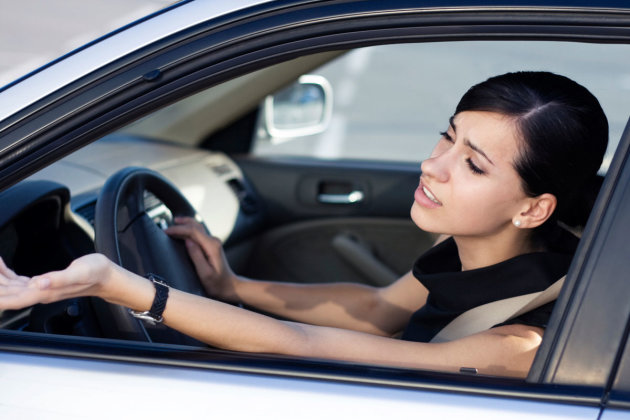
#1 What To Do If Your Car Is Hydroplaning, Or Skidding Out Of Control
Verena Mei, Rally America, says:
Hydroplaning happens on wet surfaces when water accumulates in front of a car's tires, creating a layer of water between the rubber of the tires and the road's surface that reduces traction and makes it difficult to control the car. Your first priority is to carefully slow the vehicle down so you can regain control of the car. As with any driving emergency, keep a firm grip on the steering wheel and stay calm. Ease your foot off the gas and carefully steer your car in the direction of the road. Do this until the car slows and you can feel your tires on the ground again. Avoid sudden acceleration, braking, or steering inputs, which may only cause the car to slip (hydroplane) more.
If the back wheels hydroplane, the car's rear may fishtail or veer sideways into a skid, possibly causing you to spin. Steer in the direction of the skid until the rear tires stop hydroplaning and come in contact with the ground again, and then gently steer in the opposite direction to straighten out your vehicle.
To reduce the chance of hydroplaning, try to drive in the tire tracks left by the cars in front of you. These techniques can also help maintain traction when driving on snowy roads.
#2 What To Do If Your Car Stalls While You’re Driving
Shea Holbrook, Pirelli World Challenge, says:
It can be frightening if your car stalls while you're driving, as you may lose power steering and braking. Keep in mind these systems DO still function, but you will have to work harder to use them. Stay calm and focused, turn on your flashers, and try to restart the vehicle while the vehicle is still moving.
If it won't restart, use your car's forward momentum to help you roll to the side of the road and park off the shoulder or out of the way of traffic. If you can't make it to the side of the road, stay in your car (you definitely don't want to be out of your car in moving traffic!) and call 911 to get an emergency crew to help block traffic and move you off the road.
#3 What To Do If The Tread Separates From The Tire
Ashley Freiberg, Star Mazda, says:
Tire tread separation can be even scarier than a blowout, because the outer belt can become separated from the rubber of the tire and sometimes detach completely from the rest of the tire. You may notice loud thumping and feel the vehicle pulling to the side as the tread pulls off the tire; at high speeds, this flopping tread can damage your wheel well or even drive your car completely out of control. Get a grip -- literally! Do your best to steer the car straight and gently lift your foot off the gas. Cautiously guide yourself to the side of the road, braking carefully, and then call a tow truck to change the tire. Phew, you made it!
#4 How To Stop In An Emergency Situation
Shannon McIntosh, USF2000, says:
The other day, a dog ran out in front of my car. I just gripped the wheel and stood on my brakes. I could feel the ABS pulse as the car came to a stop, and thankfully the dog escaped injury. If you have a chance to try this in an empty parking lot you'll discover that your ABS also allows you to safely steer around obstacles while in full-brake mode. Just keep your foot stomped down; don’t lift off the brake until your car comes to a complete stop. Most of today's modern vehicles are equipped with anti-lock braking systems that help drivers maintain control of the car by preventing the wheels from locking up, and as of 2012, NHTSA requires all passenger vehicles to be equipped with electronic stability control systems (which are operated by the ABS). This could prevent from 5,000 to 9,000 fatalities a year!
If you don't have ABS, panic braking takes a little more skill. You have to be able to push the brake pedal down hard, but not so hard that you lock up and skid the tires. It takes a lot of finesse to do this well, so this is another skill you could practice in an empty parking lot, to help you learn how to do it in an emergency.
If your brakes don't work at all, try to steer yourself away from traffic and people. Turn on your emergency blinkers. Use your gear selector to downshift into lower gears and, if you have room on either side of you, steer the car sharply from side-to-side to slow you down. If that doesn't work, sideswipe your car against the guardrail until you are going slow enough to use the hand or foot brake to bring you to a standstill.
#5 What To Do If Your Gas Pedal Sticks Or If Your Car Won't Stop Accelerating
Emilee Tominovich, Playboy Mazda MX-5 Cup SCAA Pro Series, says:
It’s going to sound counter-intuitive, but the first thing you should do if your car won't stop accelerating is to lift your foot off the brake -- you might have accidentally put your foot down on the accelerator by mistake! If the pedal sticks, reach down to see if something (like floor mats, or in my case, water bottles) might be wedged under there. Be sure to stay calm! The next step is to put the car into neutral (or press down the clutch). Don't worry about damaging the transmission; putting the car into neutral just takes the power from the engine away from the wheels, and lets you use the brakes to stop the car from rolling. In the worst-case scenario, you can even shut off the engine completely; just turn the key to OFF. Your steering and brakes will be harder to use, but they will still WORK! Coast to the side of the road, and use your emergency brake if you need extra help stopping. You can always practice doing this in parking lots, so you'll feel more confident if such an emergency ever arises.
#6 What To Do If Your Tire Blows Out
Katherine Legge, IZOD IndyCar Series, says:
A tire blowout can pretty much happen to anyone anytime, but it's more likely to occur if your tires are low on tread, improperly inflated, or if you hit sharp debris on the roadway. It has happened to me on the track at speeds as fast as 200 mph, and trust me, the most important thing is not to panic! You might have heard a loud boom from under the car, but don't worry. Keep a firm hold on the steering wheel and avoid hard braking. Gently lift your foot off the gas, and coast until you have control; THEN you may brake carefully. Be sure to use your emergency flashers to warn the cars behind you, but stay focused on steering the car as straight as you can while you slow down the vehicle, and guide yourself to the side of the road. Your ability to steer may be harder if you blow a front tire, and depends on how much of the rubber is left on the wheel. Call a tow truck after you get to the side of the road; if you had to roll very far before you stopped, you will probably need to replace the metal wheel in addition to the tire.

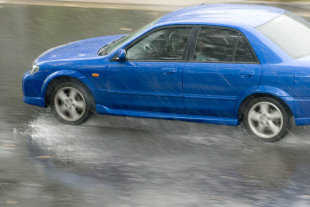
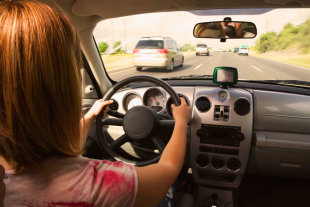
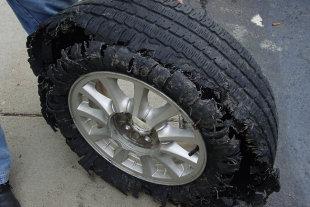
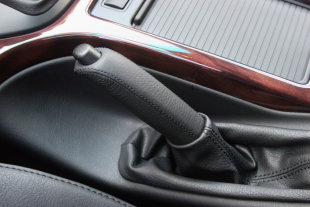

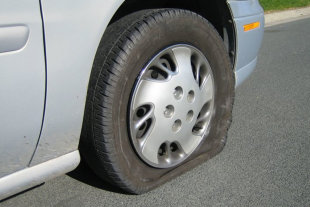
No comments:
Post a Comment